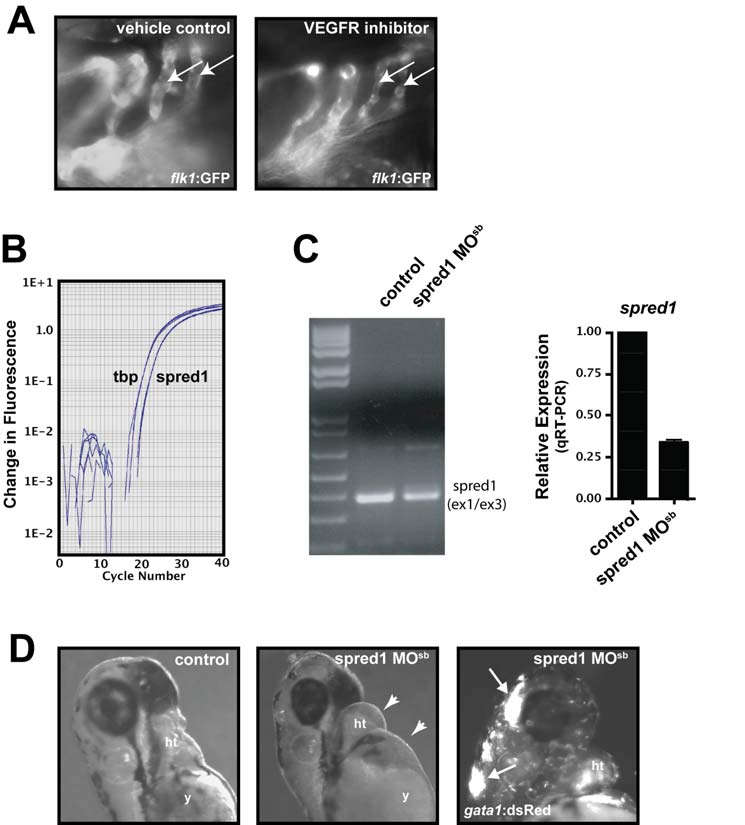Fig. S9
Spred1 and VEGF Signaling Are Required for Vascular Integrity and Function
(A) Treatment of 48 hpf embryos with 5 μM of a VEGF receptor inhibitor, Vatalanib, for 18 h results in a reduction in lumen diameter in branchial arches (arrows).
(B) spred1 expression was quantified in FACS-isolated GFP+ endothelial cells from 72 hpf Tg(flk1:GFP)s843 zebrafish embryos by real-time PCR. Shown is the amplification curve for spred1 and the endogenous control gene tbp.
(C) spred1 expression was inhibited by injection of a MO (Spred1 MOsb) that was designed to cause exon 2 skipping and the production of a premature stop codon and nonsense-mediated decay of spred1. Shown is an agarose gel of RT-PCR using primers in exon 1 and 3 (left) and qRT-PCR (right) using primers in exon 4 and 5 in 72 hpf embryos.
(D) Lateral view of 72 hpf zebrafish embryos injected with splice-blocking Spred1 MO (Spred1 MOsb) showing pericardial edema (middle panel, arrowhead) and cranial hemorrhage (right panel, arrows).
Reprinted from Developmental Cell, 15(2), Fish, J.E., Santoro, M.M., Morton, S.U., Yu, S., Yeh, R.F., Wythe, J.D., Ivey, K.N., Bruneau, B.G., Stainier, D.Y., and Srivastava, D., miR-126 regulates angiogenic signaling and vascular integrity, 272-284, Copyright (2008) with permission from Elsevier. Full text @ Dev. Cell

